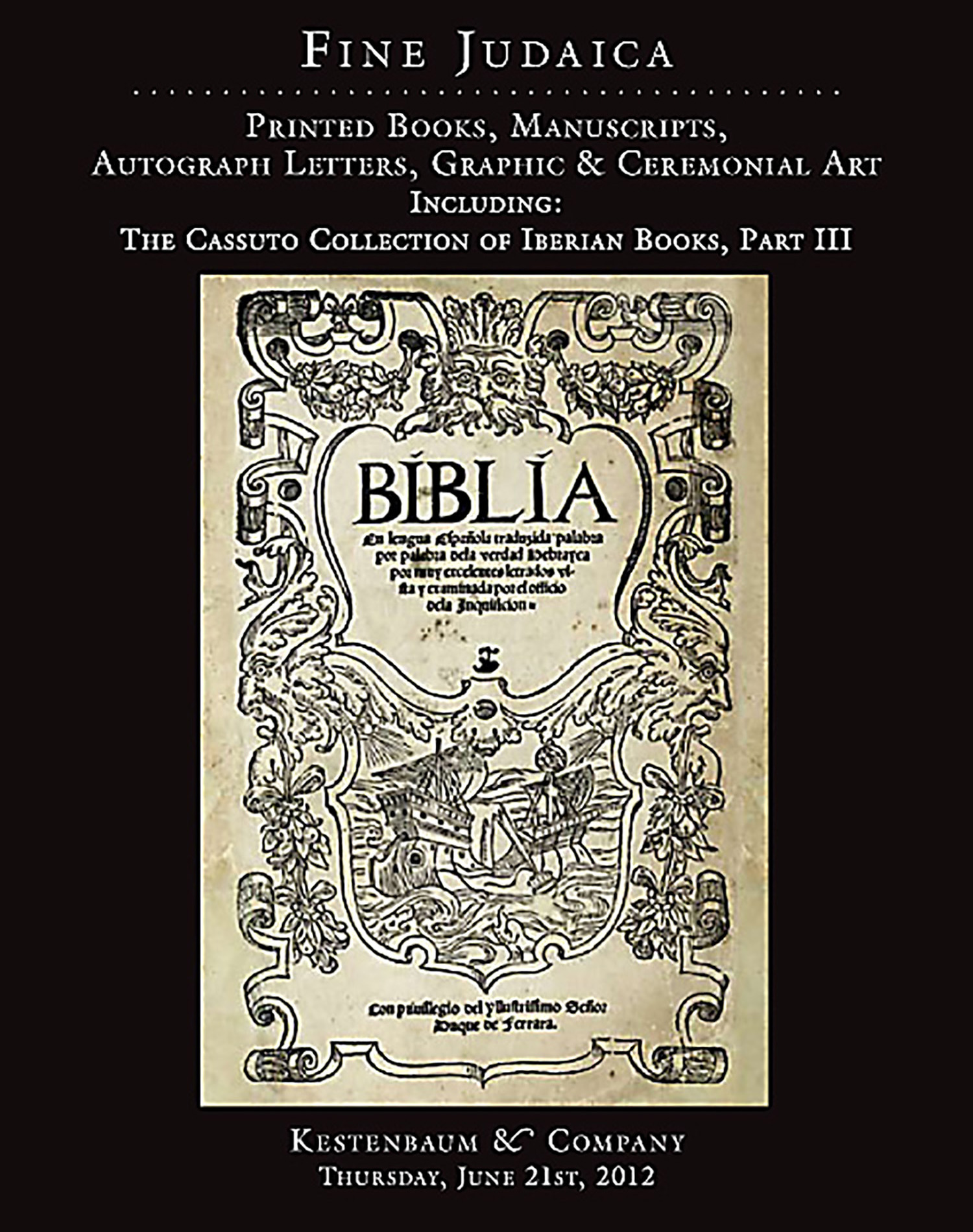David de Sola, I. L. Lindenthal, and M. J. Raphall. Sefer Torath Hashem - The Sacred Scripture in Hebrew and English: A New Translation. pp. 328 (ff. 35-199). Monthly parts II-V (Genesis 9:6-30:1) and weekly numbers 21-22 (Genesis 29:33-31:35).

AUCTION 55 |
Thursday, June 21st,
2012 at 1:00
Fine Judaica: Printed Books, Manuscripts Autograph Letters, Graphic & Ceremonial Art
Lot 45
(ANGLO-JUDAICA).
David de Sola, I. L. Lindenthal, and M. J. Raphall. Sefer Torath Hashem - The Sacred Scripture in Hebrew and English: A New Translation. pp. 328 (ff. 35-199). Monthly parts II-V (Genesis 9:6-30:1) and weekly numbers 21-22 (Genesis 29:33-31:35).
London: Samuel Bagster 1844
Est: $600 - $900
Swedish-born Morris Jacob Raphall of the Birmingham Hebrew Congregation and David Aaron de Sola, the “learned hazan” of London’s Bevis Marks Synagogue, joined forces first in 1843 to translate selected tractates of the Mishnah--the first time any extended portion of rabbinic literature had appeared in English. Next, they began collaborating, along with I. L. Lindenthal of the New Synagogue in London, on a new translation of the Hebrew Bible “with notes critical and explanatory.” Their work, published in parts like a Dickens novel, could be bought in weekly installments, or alternatively purchased in monthly or quarterly fascicles. The bulk of the space went to the modestly described “notes,” an erudite and original commentary that drew on midrash, Greek and Latin versions of the Bible, medieval and later Jewish commentators, and contemporary scholarship, some of it skeptical, against which they were glad to polemicize. They completed Genesis but no more was published.
Raphall left for New York in 1849 to become rabbi of the city’s Ashkenazic congregation, Bnai Jeshurun. Notably creative and productive, he is nevertheless chiefly remembered as the author of “A Bible View of Slavery,” the pamphlet that, for all its reservations, made a Yankee rabbi the toast of the South.
